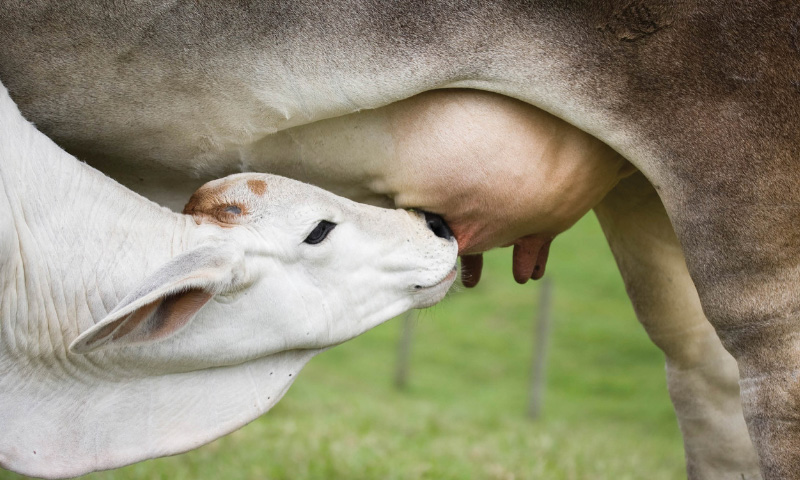The Importance of calcium for the breeding cow
There have been a number of reports this season of breeders in good condition, experiencing calving losses. In most cases, these animals are up to date with vaccinations and veterinary investigation has ruled out any underlying diseases. In these cases, the number of stillborn calves could potentially be contributed to mineral deficiencies of calcium, magnesium and other minerals.
For the past few years many parts of the Country have been severely impacted by prolonged drought and after sufficient rainfall that results in a good body of high-quality feed, many Producers cease supplementation which could have negative consequences, particularly for breeders that have high mineral requirements during pregnancy with a peak around the time of parturition and lactation. Cows need such a high volume of nutrients to sustain the output of milk that they are sometimes highly susceptible to any imbalance in nutrients received from the diet.
What happens if cows don’t get enough calcium?
Calcium metabolism is one of the most important animal health factors influencing production. When calcium is quickly lost from the body and exceeds intake, acute hypocalcaemia will occur. Hypocalcaemia is caused by a temporary blood calcium deficiency which usually occurs around the time of calving. This condition is a common cause of poor labour (dystocia) stillborn calves and sometimes sudden death in cows.
During late pregnancy and early lactation, the calcium demand increases significantly as the cow needs to produce colostrum. The cow adapts to this high demand for calcium by increasing calcium absorption from the gut and mobilising calcium reserves from the bone. Resorption of calcium is controlled by the action of the parathyroid gland. If animals are fed on a low-calcium diet, the ionic calcium concentration in the extracellular fluid falls, the parathyroid gland is stimulated and the hormone produced causes resorption of bone, liberating calcium to meet the requirements of the animal. Since calcium is combined with phosphorus in bone, the phosphorus is also liberated and excreted by the animal (McDonald, 2011).
Unfortunately, if the cows’ diet is already poor in calcium (or calcium absorption is being interfered with) and the mobilisation of calcium is not quick enough, blood calcium levels can drop significantly with negative consequences for the cow. Hungerford (1990) explains, “As 2.25 litres of colostrum contains as much calcium as in the total bloodstream of the cow, it is not surprising that sometimes the cow should ‘drain herself out’, so to speak, if the calcium-mobilising process of the body go astray.” Calcium is essential for muscle contractions and if hypocalcaemia occurs at calving time the uterine contractions cease (uterine inertia), halting parturition and resulting in the calf dying as it doesn’t get out in time.
Factors affecting calcium absorption and metabolism
Calcium works in synergy with other nutrients. Calcium and phosphorus work together to maintain the health of bones and teeth, with an ideal dietary calcium to phosphorus ratio being 2:1 (this is approximately the ratio in bone). If there is more phosphorus in the diet than calcium this will adversely affect calcium absorption. Calcium and magnesium also work together for the health of the heart, circulation and muscle function. In addition, vitamin D is required for calcium absorption.
Absorption of calcium occurs throughout most of the intestinal tract, however absorption can be adversely affected by an imbalance with phosphorus, high fat levels, vitamin D deficiency, and the presence of oxalic acid.
It is well known that eating high oxalate containing subtropical grasses can cause a severe calcium deficiency in horses known as Bighead. If ruminants are slowly exposed to a diet high in oxalate, the population of oxalate-degrading bacteria in the rumen increases sufficiently to prevent oxalate poisoning. However, if large quantities of oxalate-rich plants are eaten, the rumen is overwhelmed and unable to metabolize the oxalate and poisoning can result (Abdullah, 2013)
Hungerford (1990) noted that milking cattle fed buffel grass caused a ‘downer cow’ and a group of embryo recipient cows grazed on buffel grass had uterine inertia, giving birth to dead calves. In both these cases it seems that the oxalate content of the buffel grass bound the calcium, causing hypocalcaemia.
Conclusion
If hypocalcaemia is suspected contact your veterinarian immediately for further advice and submit dead or aborted foetuses along with the placenta for post-mortem examination to help identify the underlying cause of your herd’s reproductive problem.
An adoption of a year-round mineral supplementation program should be a priority for breeding stock to maintain adequate mineral levels. Particular attention should be made to provide adequate levels of calcium and phosphorus with MegaMin Extra Phos 8 if stock are grazing very high oxalate pastures and a focus on magnesium with the MegaMin Extra Magnesium range prior to calving. All MegaMin livestock supplements provide broad spectrum macro and trace minerals and include other minerals important for fertility such as: copper, zinc, manganese and selenium.
To assist you in selecting the right product for your situation contact AgSolutions in 1800 81 57 57.
By Shannon Godwin (BAppSc GDTL)
